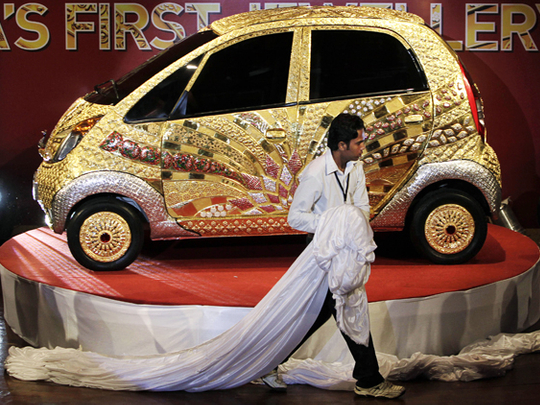
Dubai : Three years after launching what it called the world’s cheapest car, Indian manufacturer Tata has unveiled a gold and jewel-encrusted Nano in Mumbai as a tribute to 5,000 years of Indian craftsmanship.
Thirty craftsmen using traditional skills were involved in the creation of the bejewelled vehicle, using 80kg of 22 carat gold and 15kg of silver, and is inlaid with 10,000 semi-precious stones and gems.
Intricate filigree work
Jewellery-making techniques, including intricate filigree work and delicate and colourful meenakari work, were incorporated into the gleaming design, the Daily Telegraph reported.
The Tata Nano, the model that lies beneath the glinting bodywork, is marketed as the world's cheapest car with a price tag of a little over $3,000.
The gold version is worth and estimated at Rs220 million ($4.6 million) based on the current price of bullion.
The “bling” version of the Nano is a one-off showpiece that will tour Tata-owned jewellery stores across the country, according to the Financial Times.
Original Nano's sales plummet
However, the original Nano, which launched with a 100,000-customer waiting list in 2008 and was aimed at the fast-growing emerging middle class in India, has seen sales plummet.
In August the Mumbai-based group shipped just 1,202 units, down 88 per cent from April’s 10,012 units, according to the Financial Times. It quoted analysts blaming the fall on safety issues, poor marketing and a misunderstanding of the Indian consumer.












